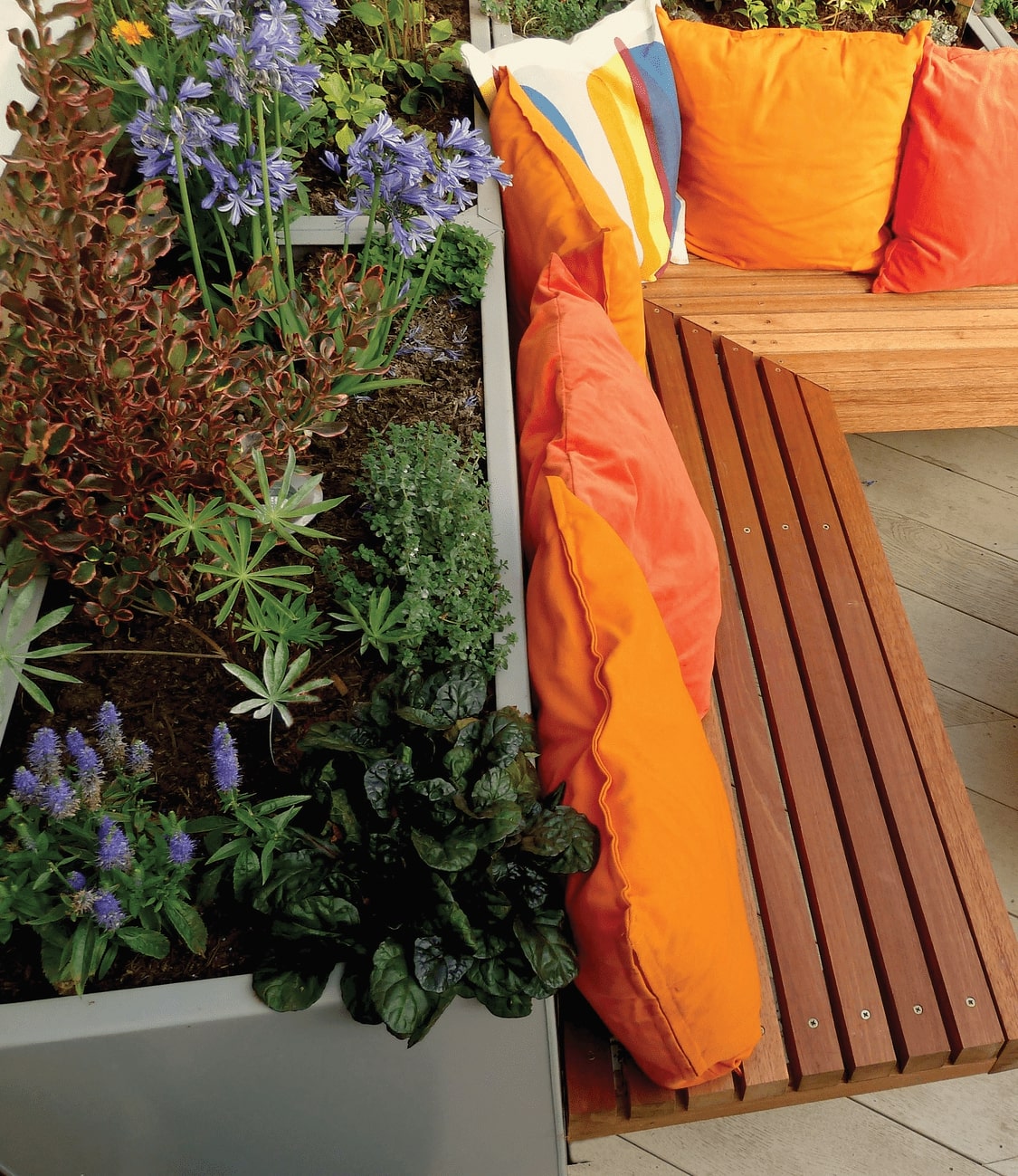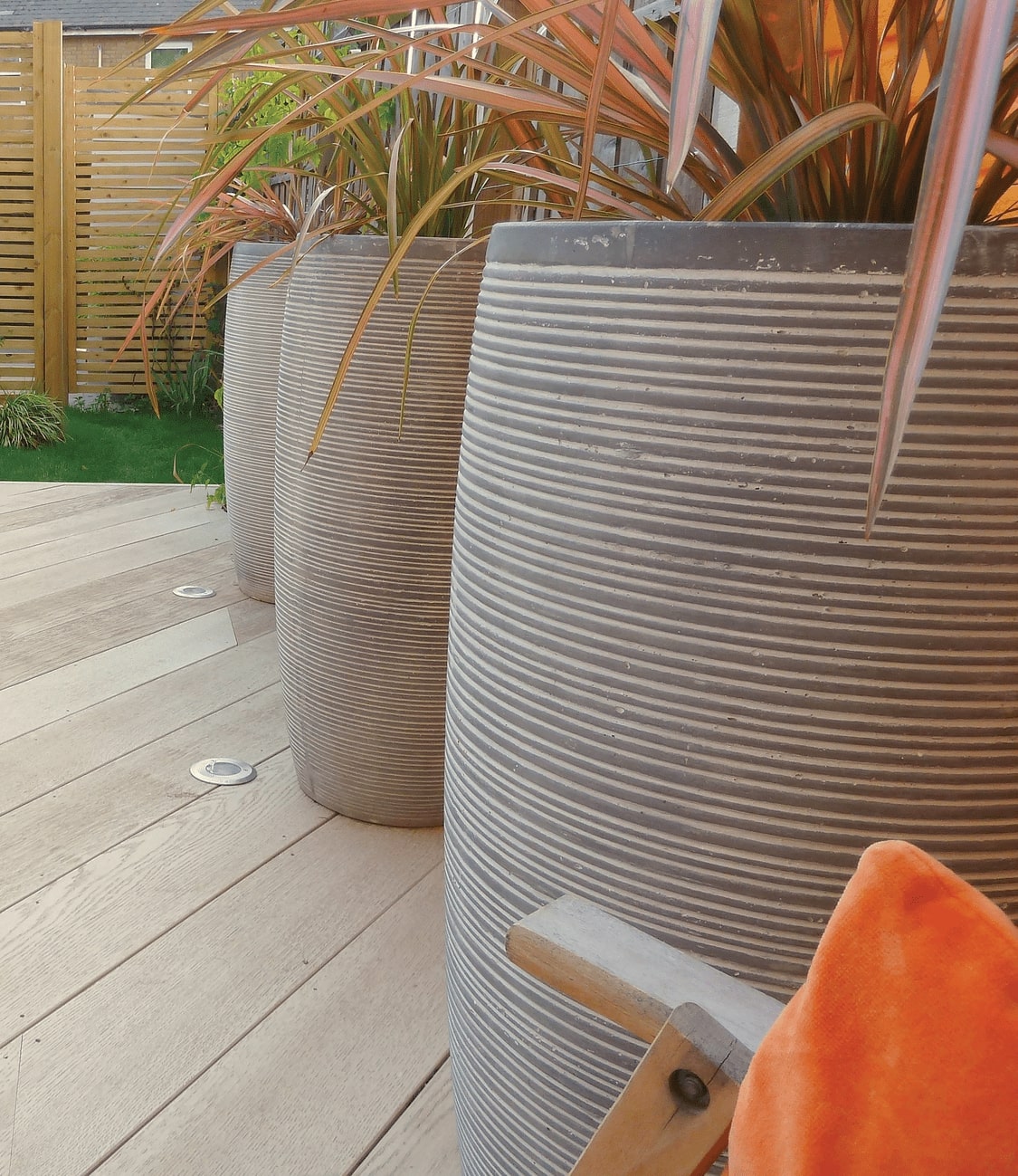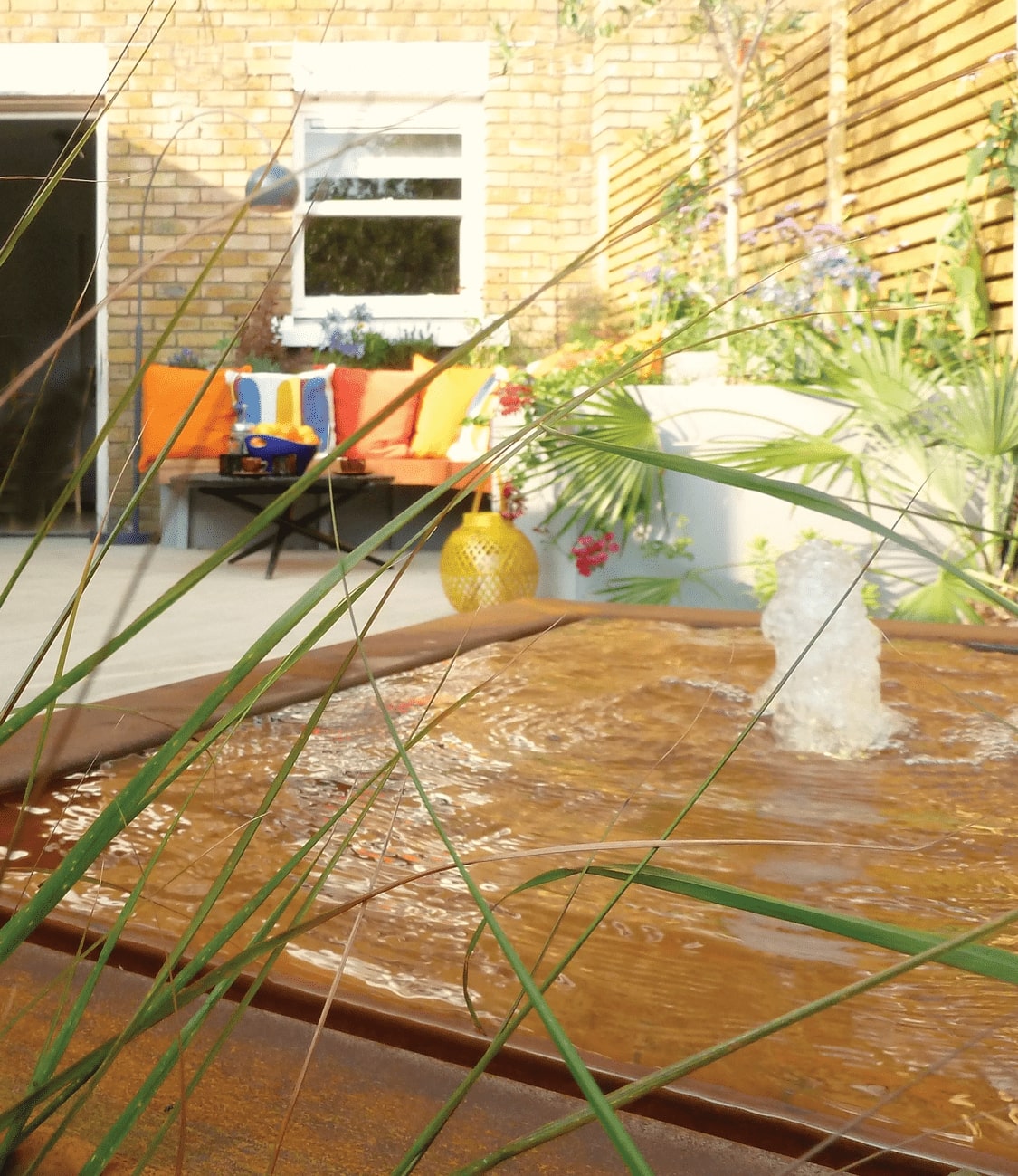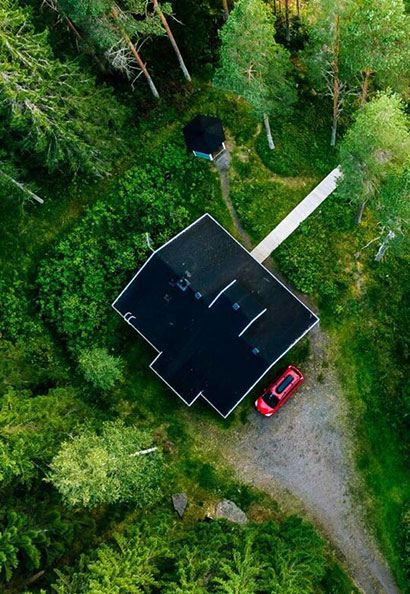A CITY GARDEN REIMAGINED FOR MAXIMUM USE
Garden designer Georgia Lindsay is known for her clever spatial solutions and innovative designs in awkward spaces. Her eponymous London-based firm was a natural fit for the homeowners of this small garden, who needed help transforming their narrow backyard. Lindsay and her team were tasked with finding a way to create a calming oasis while accommodating two unusual drain covers and leaving enough space for a carport and storage.
WRITTEN BY VICTORIA HITTNER / PHOTOGRAPHY BY GEORGIA LINDSAY



“Sometimes an inconvenience pushes you to look at the design from a different perspective and thus, find the right solution,” says Lindsay, who played with angles to camouflage the garden’s quirks. “The offset angle of the design gives an illusion of greater depth and leads the eye around the garden.”
Slatted fence panels divide the backyard in half, separating the new outdoor living space from storage. In the back, staggered fencing leads the carport and a pet relief area. Creating the spatial designation is key to keeping a garden clean, notes Lindsay, especially when animals are present.
In an effort to maximize the budget, the designer refreshed the existing fencing by cladding some of the panels. This allowed for the creation of custom pieces like the floating Ipe hardwood bench—ideal for withstanding harsh weather—and accompanying metal planters. Underfoot, Millboard composite decking keeps spills easy to mop up and year-round maintenance a breeze. The rich contrast of materials ensures that the space looks complete with or without warm-weather accents like pillows. Even the wooden table can be folded and removed to accommodate for entertaining or inclement weather.
Around the seating area, Lindsay filled planters with perennials and aromatic herbs like thyme and rosemary. “The clients were actually keen gardeners and were happy to have a medium level of involvement in tending for their garden,” she says. “They wanted quite a broad spectrum of plants, so smaller sized varieties were selected.”
Throughout the garden, Lindsay kept the color palette simple with a slew of purples and cheerful splashes of orange and pink. “Agapanthus played quite a large role giving some structure to the planting, and this variety has evergreen foliage for interest during the winter months,” she explains. “The softer Verbena bonariensis, [placed] at the back for seasonal height, complements this really effectively.” Lindsay notes that the plantings were only a couple of months mature at the time of photography. Crawling plants like the Campsis radicans will continue to flourish, eventually climbing up the fence and toward the wall. The nearby olive tree, however, will grow much more slowly, remaining compact with pruning and providing the perfect amount of shade each year.
A Corten steel water table adds to the serenity of the space, masking both a drain cover and the noises of urban life with its soft burbling. The coppery oranges of the Stipa arundinacea and irises surrounding the water feature are echoed in the statement planters atop the deck. Lindsay filled the planters with hearty Phormium ‘Jester,’ which does well in both sunny and shady conditions.
At night, uplighting encases focal features like the standing planters and water table in a warm glow. “I always encourage my clients to include a lighting design in the scheme,” notes Lindsay. “Create a cozy environment [to] enhance the foliage like you would a beautiful painting or sculpture in your home. We use our gardens just as much in the evenings with the busy lives we lead, so it’s essential to have a welcoming space to retreat to.”
The result is a relaxing oasis that cleverly maximizes functional space—no matter the time of day or year. It’s a pocket of peace for the homeowners amidst a frenetic urban environment.
“I grew up in cities and know how important it is to green our urban spaces for health, well-being, and biodiversity,” says Lindsay. “For [our] mental health, we need more than ever to be able to connect to nature on any scale. It doesn’t matter how small someone’s ‘garden’ is—it’s always worth embracing and maximizing to its full potential.”
mini to the max
Designer Georgia Lindsay offers these tips for maximizing a small outdoor living area or garden.
Plan with purpose. “Understanding how the space will be used is key to designing the right space for the right lifestyle,” notes Lindsay. Outdoor kitchens, for example, are popular additions to modern gardens, but become unnecessary if an interior kitchen is nearby.
Keep it simple. Avoid a cluttered feel by using just a few focal pieces, like eye-catching planters. Colors should be uncomplicated, too. “Keep the planting palette simple with greens as the predominant colors and splashes of tonal colors to create harmony,” recommends Lindsay.
Invest in versatility. “Have multipurpose features such as a fire pit that can transform into a coffee table [or] seating that doubles up as storage areas,” says Lindsay. “Screening can [also] be very useful in emphasizing key features and obscuring less attractive parts of the garden.”

226.256.7999
amberjenings(at)peakpointrealestate(dotted)ca
peakpointre.realtor




